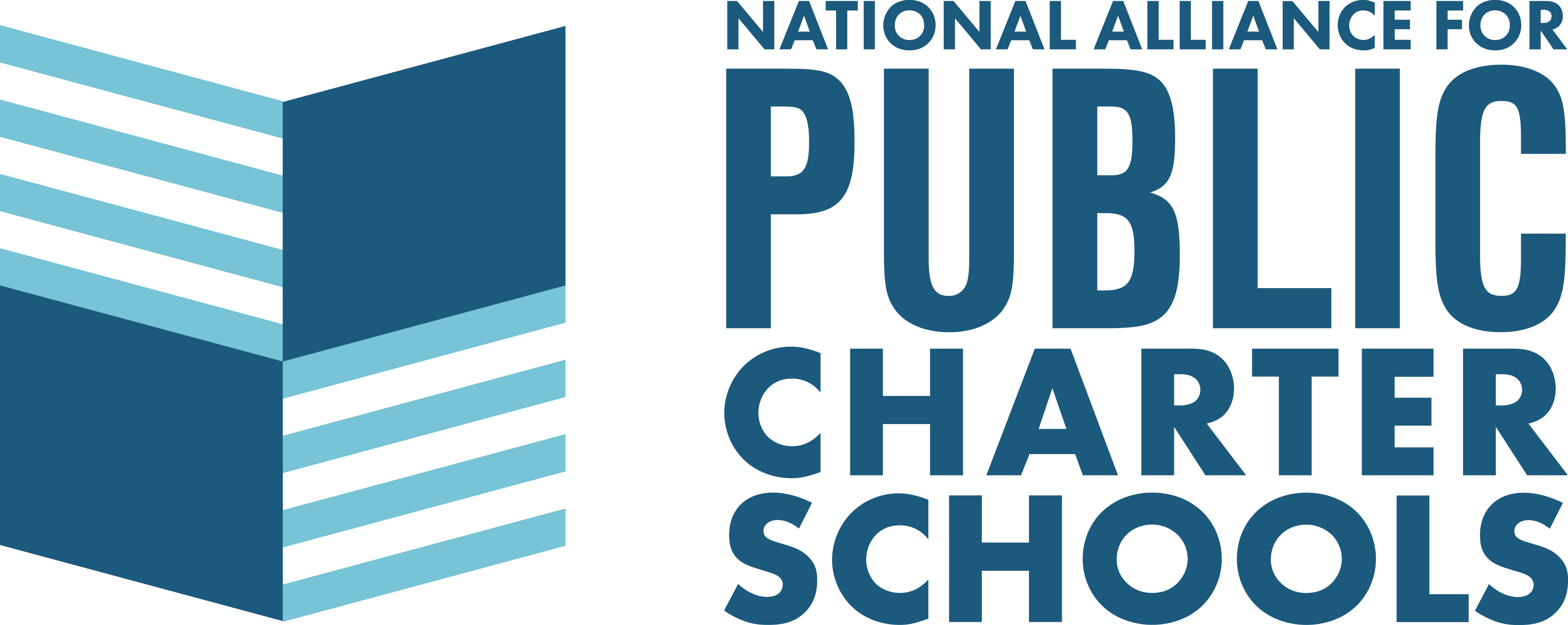1. How Many Charter Schools and Students Are There?
Top Takeaways (2023–24 School Year)
- Charter schools serve nearly 4 million students, representing 7.8% or nearly 1 in 12 public school students nationwide.
- Enrollment in charter schools grew by 550,000 students in five years, increasing by nearly 17%. During that same period, district enrollment declined by nearly 1.8 million students or about 4%.
Alabama, Puerto Rico, and West Virginia — three places where charter school laws are still new — are seeing impressive enrollment growth at 19%, 24%, and 83% respectively.
Charters enroll students in 44 states, plus DC, Puerto Rico, and Guam.
Five states — California, Texas, Florida, Arizona, and New York — educate more than half (51.7%) of all charter students.
Why It Matters
Charter schools aren’t just growing — they’re reshaping what public education looks like for millions of families. Parents are “voting with their feet,” choosing charter schools that better fit their children’s needs. Even during the pandemic, when traditional public schools saw major enrollment declines, charter schools saw their largest one-year surge in nearly a decade. In fact, over the last five years, enrollment in charter schools has surged 17%.
Growth and Accountability
One of the defining strengths of the charter school sector is real accountability. Charters that fail to deliver for students close. This is not a flaw, it’s a feature. Some states, like as Ohio, automatically revoke the charters of underperforming schools.
- In 2022–23, only 2.2% of charter schools closed, with most closing because of low academic performance, low enrollment, or financial challenges closely tied to enrollment
- Over the last decade (from 2012-13 to 2022-23), the average closure rate has been just 3.2%, demonstrating the overall success and stability of charter schools.
- Importantly, only 4% of new schools close in their first year, typically because of facility or startup issues.
This accountability means families can trust the sector: when a charter school doesn’t meet performance benchmarks, it is phased out to make room for stronger options. Far from signaling instability, closures show that states hold charter schools to a higher standard; quality education for students comes first.
Figure 1.1: Number of Charter Students and Schools From 1992–93 Through 2023–24
A Nationwide Movement
Charter schools are no longer a niche reform — they are a nationwide movement. As of 2023–24, families in 44 states plus DC, Puerto Rico, and Guam have access to public charter schools. In fact, 47 states (plus DC, PR, and GU) have charter school laws on the books, with only Kentucky, Montana, and North Dakota still waiting for their first schools to open.
Even as the sector matures, new schools keep opening every year. In 2023–24, there were 212 new school or campus openings nationwide. While this was down slightly from 295 the previous year, the story is one of steady expansion — especially in states leading the way.
- Texas opened 32 new charter schools or campuses, the single largest number in the country.
- Florida added 20 new schools, helping fuel family demand for more options.
- Minnesota, the birthplace of the charter movement, continues to show vitality with 12 new schools and campuses in 2023–24.
Together, just these three states accounted for nearly one-quarter of all new openings nationwide — proof that when state policy fosters choice, families respond with demand.
Figure 1.2: Total Number of Charter Schools and Campuses by State, 2023–24
Where Charter Schools Shine Brightest
Charter schools may be national, but a handful of states drive more than half of all enrollment. Just five — California, Texas, Florida, Arizona, and New York — educate the majority of charter students across the country.
- California leads the nation with the largest charter school sector. Nearly 1 in 5 charter students nationwide goes to school in California — more than in most entire states’ public school systems.
- Arizona is the national standout in terms of enrollment share. Fully 1 in 5 public school students in Arizona attends a charter school, making it the state where families choose charters at the highest rate.
- Texas, Florida, and New York round out the top five, together demonstrating that charter demand spans every region of the country — from the West Coast to the Sunbelt to the Northeast.
These states show how scale and demand go hand-in-hand: where families are given real choices, charter schools don’t just grow — they thrive.
Figure 1.3: States With the Largest Charter School Enrollment
Brick-and-Mortar vs. Virtual: A Sector That Adapts
The pandemic reshaped how families thought about schooling, and charter schools demonstrated their flexibility to meet students where they are.
- Brick-and-mortar charters have shown steady, long-term growth — rising from 3.13 million students in 2019–20 (pre-pandemic) to 3.43 million in 2023–24. Families continue to flock to in-person charter schools for innovative learning models and community-based options.
- Virtual charters were stable before the pandemic, serving about 7.5–8% of charter students year after year. In 2020–21, demand surged, pushing virtual enrollment to 12.9% of the charter sector — the single biggest jump in modern charter history.
- As students returned to classrooms nationwide, virtual enrollment dipped (12.5% in 2021–22; 11.7% in 2022–23), but has since rebounded to 11.9%, showing the virtual sector has stabilized at a higher baseline than before COVID.
Together, these trends tell a clear story: charter schools aren’t static. They adapt to family demand — whether through dynamic brick-and-mortar programs or resilient virtual options that now represent a lasting share of the movement.

